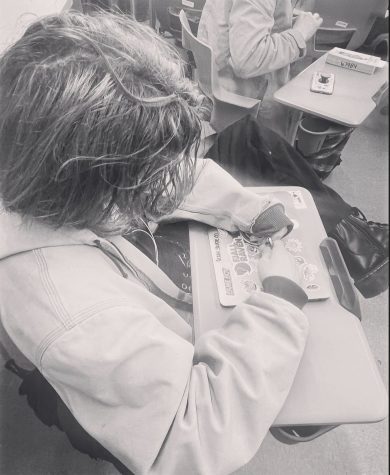Women in General Surgery
During high school, Beth Kimball worked at a local medical clinic as a receptionist. Every weekend, Kimball would check people in and get their insurance cards, giving her minor experiences and a small glimpse into the health care world.
When Kimball was studying English at the University of Minnesota, she began to consider the idea of becoming a medical school student and eventually a physician. As the idea lingered, Kimball began to think more seriously on the topic.
“I realized [med school] was what I thought I should do, so I took all of the required pre med classes, took the MCAT and I went directly from college to medical school at the University of Chicago,” Kimball said.
Going into medical school, Kimball initially thought she would become an obstetrician. She loved the idea of working with women and delivering babies, but when she did her obstetrics rotation, she found that she did not care much for the profession. But when Kimball did her surgery rotation, she was surprised by how much she enjoyed it.
“Never once did I ever consider going into surgery because not many women — in fact, no women — were in surgery when I was in medical school,” Kimball said. “There was one woman who was in breast surgery and she was amazing, but she was not married, didn’t have a family, and that was my only role model.”
Due to the scarce representation, Kimball didn’t think it was possible for her to become a surgeon because she desired to be married and have a family. But as she thought more about the possibility, Kimball realized that surgery was a field where she could help someone every single day.
“I love working with my hands and doing very delicate fine work and I was very good with hand eye coordination,” Kimball said. “It occurred to me that this was a field that I could actually be successful in.
Kimball decided to apply to many general surgery residencies, and got accepted at her first choice: the University of Michigan. In her residency, there were seven interns, four of them women and the other three men.
“It was a breakout match year for the University of Michigan surgery residency to have four women match and three men, that never happened before,” Kimball said.
Residency was challenging. Kimball was on call every other night and spent nights sleeping at the hospital: she found herself working 60 to 80 hour work weeks, which would occasionally carry over into 100 hour work weeks.
“[Residency was] a tremendous amount of work, but a tremendous amount of learning as well,” Kimball said. “It was a tough environment. You had to develop a thick skin and take criticism, and then change your behavior based on that criticism.”
After residency, Kimball took a job at St. Joseph Mercy Hospital, where she has been working for almost 25 years now. At the beginning, she was the only woman in the general surgery department working five days a week.
“I had a baby right out of my residency and many of my male colleagues’ wives did not work,” Kimball said. “ Their wives were homemakers, which is wonderful, but my husband worked and then I worked. It was soon obvious to me that with a three-month old baby, I couldn’t do the same amount of work as my male colleagues.”
After making the decision to change her schedule, Kimball talked to her colleagues, and explained the challenges she was dealing with trying to balance raising a newborn and her demanding work schedule.
“I started working only three days a week, but I took the same amount of calls as the men,” Kimball said. “It allowed me to stay home with my first child and then eventually raise three boys. I had a really successful career, but I was also able to be there for my children.”
During Kimball’s work days, she would spend the night at the hospital, working. Though on her days off, she was able to be more present for her children and husband, she was not able to see much of them during her hectic work days.
Working as a surgeon and also being a mother was something Kimball found extremely enjoyable, but also difficult. She found that she had to compartmentalize her life. When she was operating on a patient, the patient had to be the most important thing; but when she was at home, her focus was on being there for her family.
“It’s not easy, it’s exhausting, it is tiring, but women do it,” Kimball said.
Throughout her career, Kimball always felt that she was surrounded by a supportive community.
“When I told the faculty that my current schedule wasn’t working for me as a mother, and even though they’d never done this before, they told me I could work fewer hours,” Kimball said. “I was the first person to work a part time schedule and they were very supportive of that.”
Not only were Kimball’s male colleagues supportive, but the nurses she worked with were equally as encouraging.
“When I was far along [in pregnancy], it was hard to stand on my feet and operate, but I did and the female nurses in the room with me would bring me little cups of ice with a straw in there and they would stick the straw in my mouth so I could suck some water when I was operating,” Kimball said.
Having been through the challenges of balancing a demanding job and motherhood, Kimball highly recommends that other women in this situation advocate for themselves.
“If a person thinks there’s no way to balance being a mother or doing this career, then you are preventing yourself from finding the solution. There probably is a way to do it, but giving up so easily closes that door,” Kimball said. “Your feelings as a mother are valid. No one came to me in the beginning of my career telling me I should take some days off — I had to recognize what I needed and then make it happen.”
As time has gone on, Kimball has seen a great change in the amount of female surgeons. To help influence this change, she has done her best to encourage and support the young women that are her scribes. Kimball hopes to be a good mentor for these young women, showing them that it is possible to have the best of both worlds.
“All the young women I have worked with have been excellent,” Kimball said. “I want to promote people like that.”









